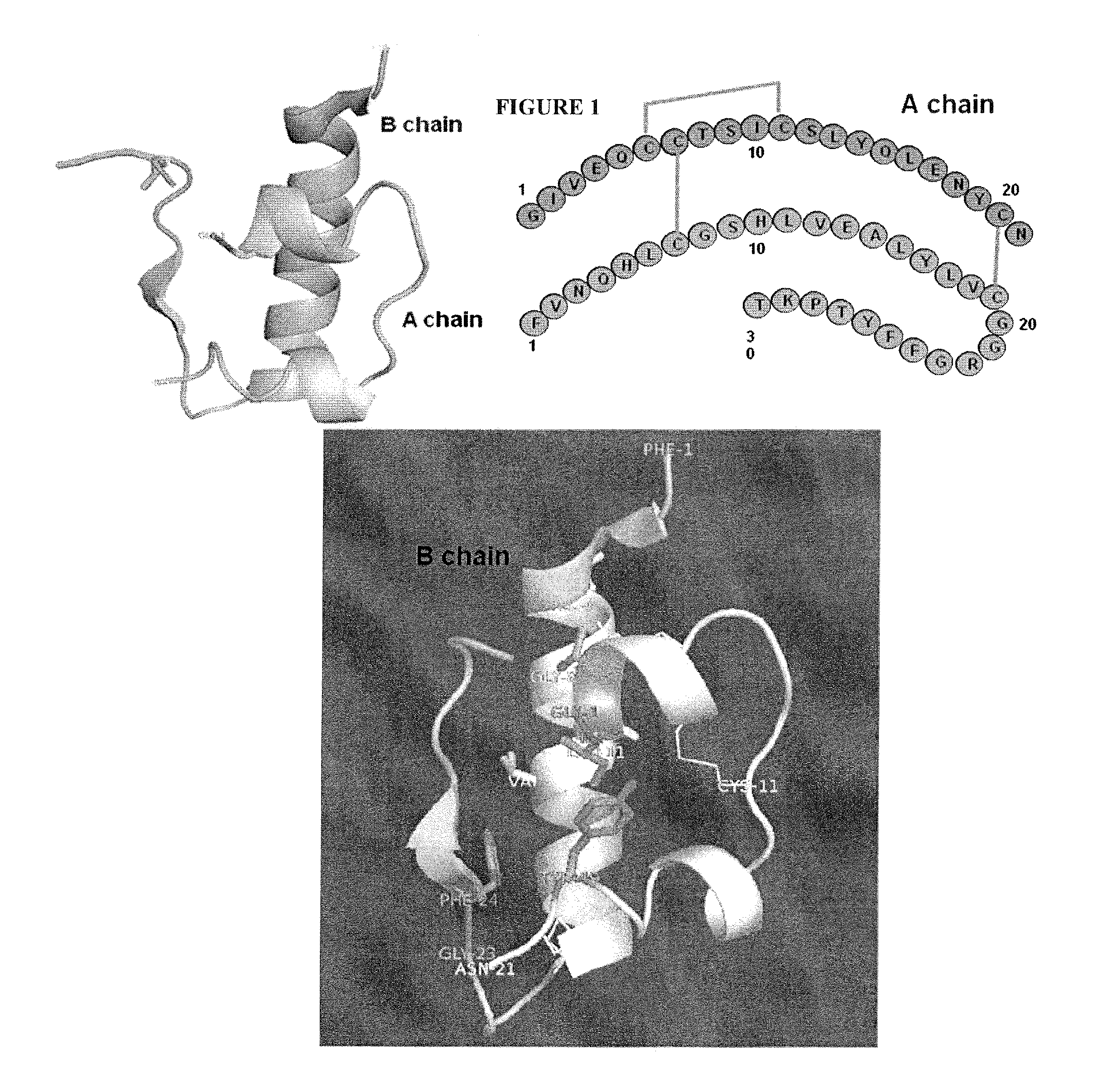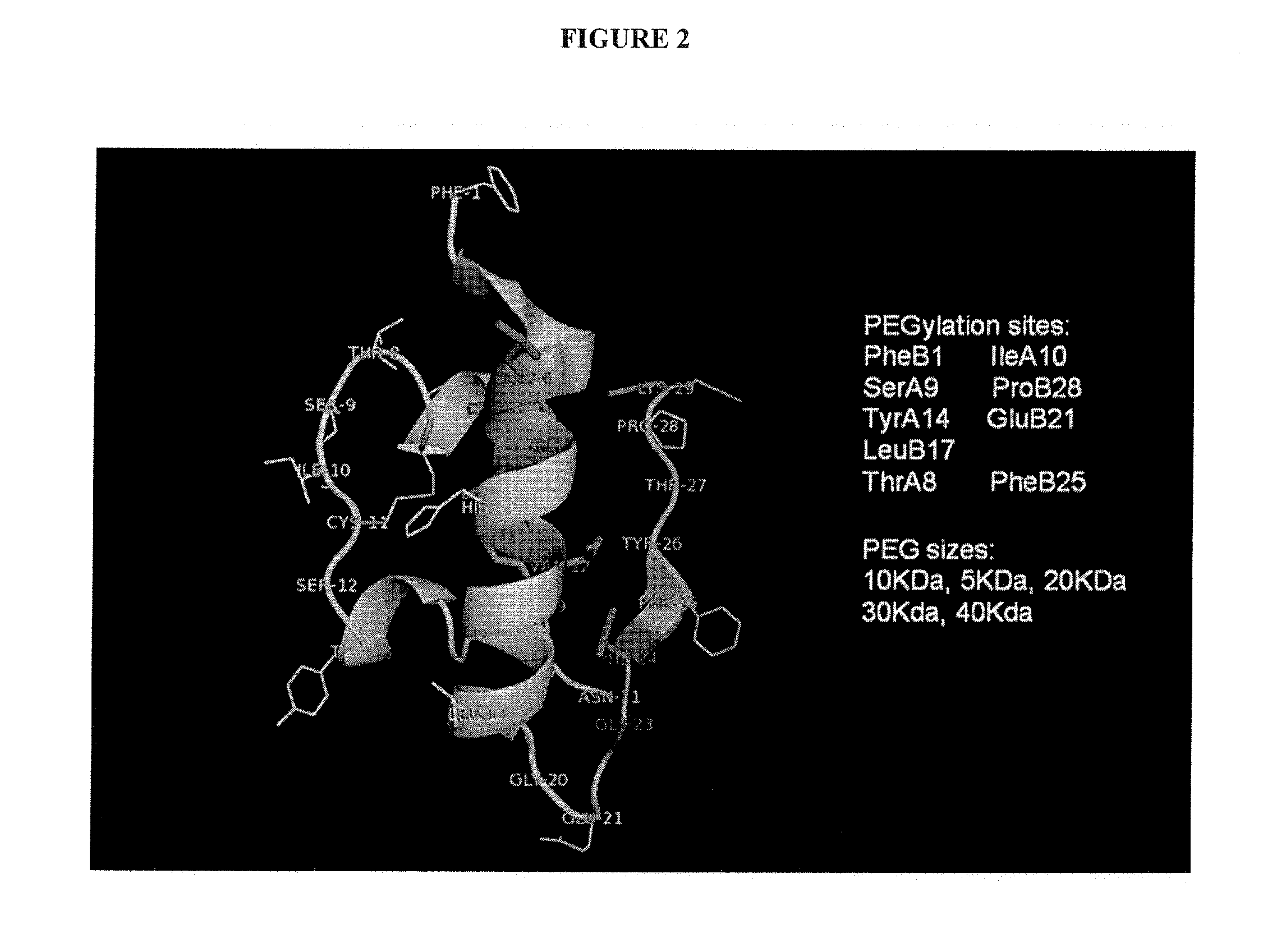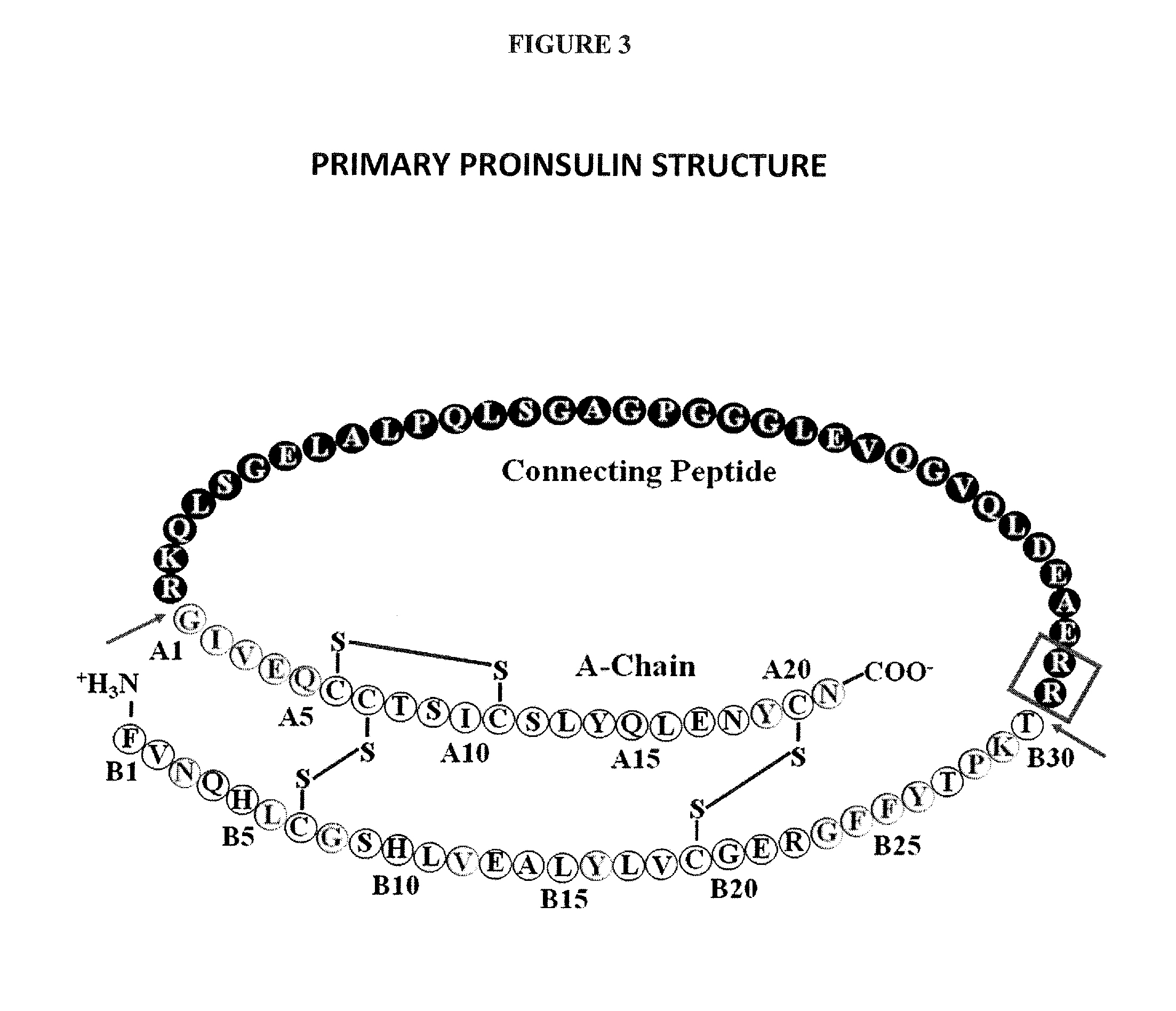Modified Insulin Polypeptides and Their Uses
a technology of insulin polypeptides and modified peptides, which is applied in the field of insulin polypeptides, can solve the problems of increasing the number of people affected, the death of ketoacidosis, and the low public awareness, and achieves the effect of increasing the therapeutic half-life, serum half-life or circulation time of insulin polypeptides
- Summary
- Abstract
- Description
- Claims
- Application Information
AI Technical Summary
Benefits of technology
Problems solved by technology
Method used
Image
Examples
example 1
[0599]This example describes one of the many potential sets of criteria for the selection of sites of incorporation of non-naturally encoded amino acids into insulin.
[0600]FIG. 1 shows the structure and sequence of insulin (NP—000198—Human Protein accession number), and the table below includes SEQ ID NO: 13 with the full length sequence of human insulin, SEQ ID NO: 14 with the full length human insulin sequence without the leader, SEQ ID NO: 1-12 contain A chain and B chain sequences for insulin, lispro, aspart, glulisine, detemir, and glargine. Insulin polypeptides were generated by substituting a naturally encoded amino acid with a non-naturally encoded amino acid. Each polypeptide had one of the amino acids substituted with para-acetylphenylalanine or with para-aminophenylalanine. The polypeptides generated lacked the leader sequence and were A / B chain insulin polypeptides (SEQ ID NO. 1-14). Each of the polypeptides generated had a non-naturally encoded amino acid substitution a...
example 2
[0605]This example details cloning and expression of an insulin polypeptide including a non-naturally encoded amino acid in E. coli.
[0606]Methods for cloning insulin are known to those of ordinary skill in the art. Polypeptide and polynucleotide sequences for insulin and cloning of insulin into host cells are detailed in U.S. Pat. No. 5,962,267; U.S. Pat. Nos. 4,751,180, 7,105,314, 6,630,348, 6,777 and 7,091,032 Annibali patent entitled “Expression of a human insulin precursor in P. pastoris”, as well as U.S. Patent Publication Numbers 20080268519, 20080255045, 20080227205, 20080207877, 20080207877, 20080213828, 20080261311, and 20080227195; all of which patents and published applications are herein incorporated by reference.
[0607]cDNA encoding the lispro forms of insulin are shown as SEQ ID NOs: 34, 35, 36, and 37. This mature polypeptide is shown as SEQ ID NOs: 3 and 4.
[0608]An introduced translation system that comprises an orthogonal tRNA (O-tRNA) and an orthogonal aminoacyl tR...
example 3
[0615]This example details introduction of a carbonyl-containing amino acid and subsequent reaction with an aminooxy-containing PEG.
[0616]This Example demonstrates a method for the generation of an insulin polypeptide that incorporates a ketone-containing non-naturally encoded amino acid that is subsequently reacted with an aminooxy-containing PEG of approximately 5,000 MW. Each of the residues before position 1 (i.e. at the N-terminus), 1, 2, 3, 4, 5, 6, 7, 8, 9, 10, 11, 12, 13, 14, 15, 16, 17, 18, 19, 20, 21, 22 (i.e., at the carboxyl terminus of the protein of SEQ ID NO: 1 or the corresponding amino acids in SEQ ID NOs: 3, 5, 7, 9, 11) and each of the residues before position 1 (i.e. at the N-terminus), 1, 2, 3, 4, 5, 6, 7, 8, 9, 10, 11, 12, 13, 14, 15, 16, 17, 18, 19, 20, 21, 22, 23, 24, 25, 26, 27, 28, 29, 30, 31, 32 (i.e., at the carboxyl terminus of the protein of SEQ ID NO: 2 or the corresponding amino acids in SEQ ID NOs: 4, 6, 8, 10, 12) is separately substituted with a no...
PUM
 Login to View More
Login to View More Abstract
Description
Claims
Application Information
 Login to View More
Login to View More - R&D
- Intellectual Property
- Life Sciences
- Materials
- Tech Scout
- Unparalleled Data Quality
- Higher Quality Content
- 60% Fewer Hallucinations
Browse by: Latest US Patents, China's latest patents, Technical Efficacy Thesaurus, Application Domain, Technology Topic, Popular Technical Reports.
© 2025 PatSnap. All rights reserved.Legal|Privacy policy|Modern Slavery Act Transparency Statement|Sitemap|About US| Contact US: help@patsnap.com



